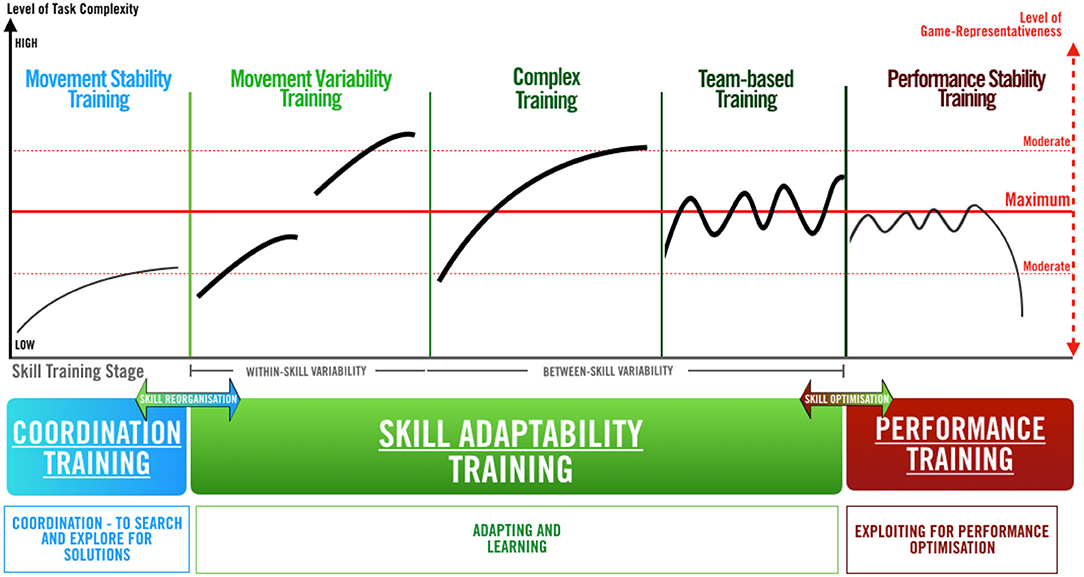
Periodization Explained: The Science Behind Peak Performance
Introduction: Training Without a Plan Is Just Exercise
Every athlete trains hard — but only a few peak at the right time. That difference lies in periodization — the art and science of planning training over weeks, months, and even years to produce the right adaptation at the right moment. At NASC, periodization isn’t just a theory. It’s the framework that turns chaos into progress and effort into performance.
1. What Is Periodization?
Periodization is the systematic division of training into specific phases, each with a defined goal, volume, and intensity. It ensures that the athlete’s body experiences progressive stress followed by planned recovery, leading to continuous adaptation and peak readiness when it matters most.
In simple terms:
“Periodization tells you what to train, when to train it, and how hard to push — all based on science.”
— NASC Coaching Framework
Without it, athletes either undertrain (no progress) or overtrain (fatigue, injury, burnout).
2. The Science of Adaptation
Training is stress. The body responds through three stages:
-
Alarm phase – The body reacts to a new stimulus (fatigue, soreness).
-
Resistance phase – Adaptation occurs (stronger, faster, more efficient).
-
Exhaustion phase – If stress continues without recovery, performance declines.
Periodization manipulates training variables — volume, intensity, frequency, rest — to keep athletes in the resistance phase while avoiding exhaustion.
That balance between overload and recovery is the heart of performance science.
3. The Classic Model: Linear Periodization
The traditional linear model, developed by Tudor Bompa and later refined by Verkhoshansky and others, follows a steady increase in intensity while volume gradually decreases.
Example (12-week strength cycle):
-
Weeks 1–4 (Hypertrophy Phase) → High volume, moderate load (e.g., 70% 1RM, 8–12 reps).
-
Weeks 5–8 (Strength Phase) → Moderate volume, heavier load (80–90% 1RM, 4–6 reps).
-
Weeks 9–12 (Peaking Phase) → Low volume, high intensity (90–95% 1RM, 1–3 reps).
This structure builds muscle, then strength, then performance — ideal for beginners or athletes preparing for competition.
4. Beyond Linear: The Modern Models
Today’s NASC-trained coaches use several periodization strategies depending on sport, experience, and data feedback:
| Model | Description | Best For |
|---|---|---|
| Undulating / Non-Linear | Volume and intensity vary daily or weekly | Intermediate athletes; multi-stimulus adaptation |
| Block Periodization | Training blocks focus on one quality at a time (e.g., hypertrophy → strength → power) | Advanced athletes with clear competition peaks |
| Concurrent Periodization | Multiple attributes (strength, power, speed, endurance) trained within one cycle | Team sports or mixed athletes |
| Tapering & Peaking | Gradual load reduction before major events to maximise recovery and power output | Competitive lifters, strongmen, athletes pre-competition |
Each model shares one goal — synchronise stress and recovery to maximise adaptation.
5. The Variables That Drive Periodization
Every NASC coach is taught to manipulate the “Big Four” variables:
-
Volume – Total workload (sets × reps × load).
-
Intensity – Load relative to 1RM or effort (RPE).
-
Frequency – How often a muscle or movement is trained.
-
Rest & Recovery – Sleep, nutrition, deloads, active recovery.
Manipulating these strategically creates training waves — micro (daily), meso (weekly), and macro (seasonal) cycles — that guide long-term athlete development.
6. Common Mistakes in Periodization
Even experienced coaches can fall into traps such as:
-
Overloading without adequate deloads → chronic fatigue.
-
Focusing only on intensity → loss of technical quality.
-
Copying elite programs without context → mismatch to athlete level.
-
Ignoring monitoring data → failure to adjust in real time.
Fix it:
Use data (HRV, bar velocity, RPE trends) to monitor recovery and adaptation. Adjust load and phase duration based on response, not just the calendar.
7. NASC’s Evidence-Based Framework
At NASC, periodization is taught not as a template, but as a dynamic system guided by data.
Coaches learn to:
-
Identify athlete readiness through testing and monitoring.
-
Use load management algorithms to adjust training volumes.
-
Integrate strength, conditioning, mobility, and recovery phases cohesively.
-
Build year-long and multi-year macrocycles aligned with competition calendars.
This approach turns periodization from “paper planning” into a living, adaptive system — powered by feedback and evidence.
8. Periodization Beyond Strength — The Human Element
True periodization also considers mental fatigue, motivation cycles, and life stressors. An athlete’s mind adapts just like their body — through cycles of challenge and recovery. The best coaches know that timing effort is as critical as designing effort. That’s why NASC emphasises a holistic model — physical + psychological periodization.
Conclusion: Plan the Work, Then Work the Plan
Great athletes aren’t built by chance — they’re built by structured progression.
Periodization ensures that every rep, set, and rest day serves a purpose. Without it, training becomes noise. With it, performance becomes predictable, measurable, and repeatable.
That’s why periodization remains the backbone of scientific coaching — and why NASC continues to educate Malaysia’s next generation of coaches in the art and science of peak performance.
References
-
Bompa, T., & Buzzichelli, C. (2018). Periodization: Theory and Methodology of Training. Human Kinetics.
-
Issurin, V. (2016). Block Periodization: Breakthrough in Sports Training. Ultimate Athlete Concepts.
-
Zatsiorsky, V. M., & Kraemer, W. J. (2006). Science and Practice of Strength Training. Human Kinetics.
-
Jeffreys, I. (2016). Strength and Conditioning for Sports Performance. Routledge.



